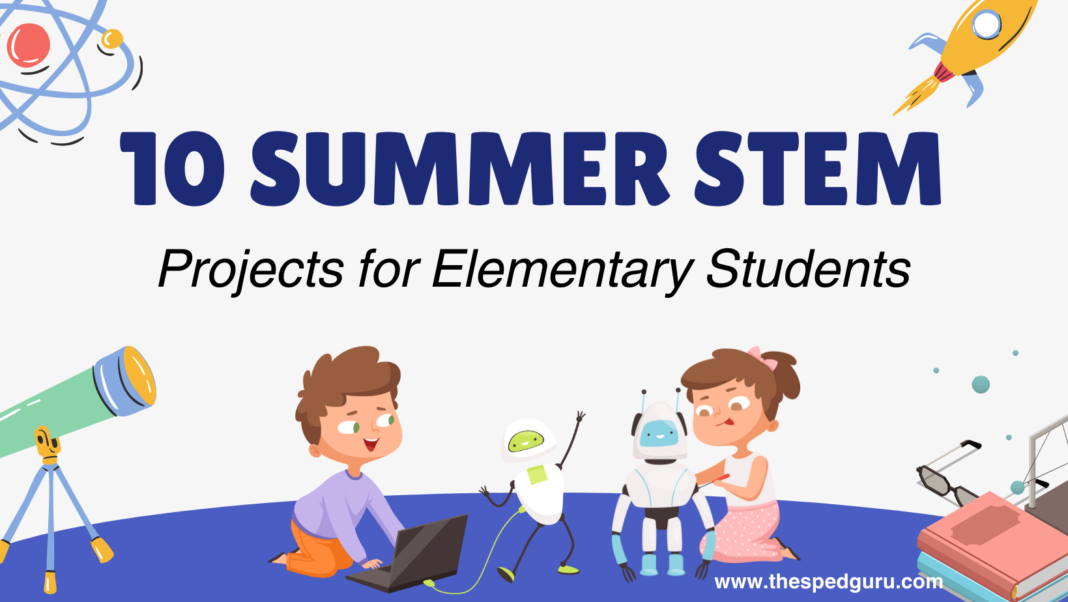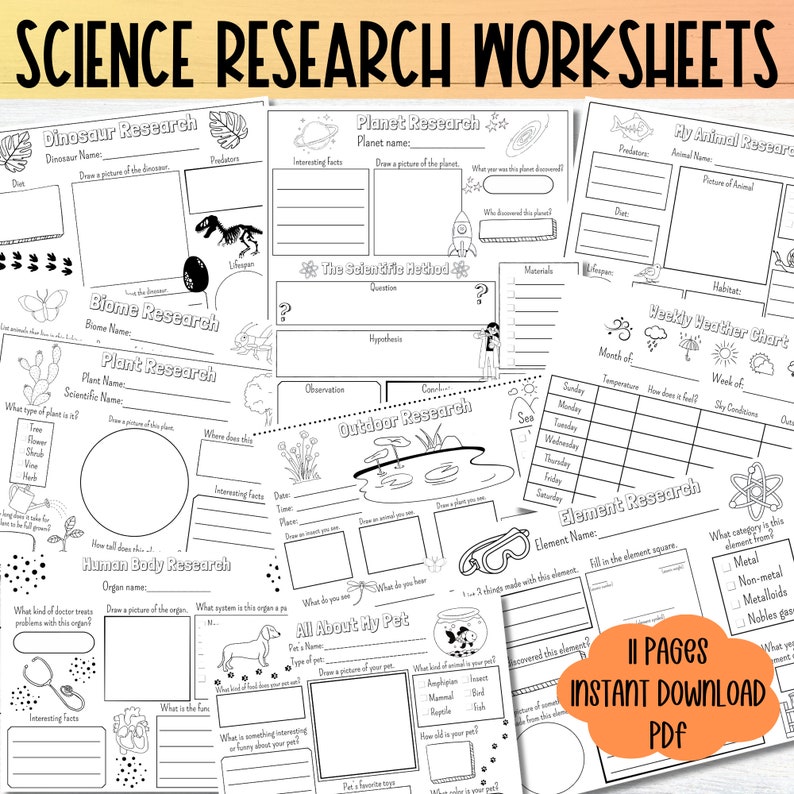Looking for fun and educational summer STEM projects for elementary students? Check out these ten creative and engaging ideas.
Summer may be here, but that doesn’t mean that your child’s education has to stop completely. With summer STEM projects for elementary students, you can introduce great creative challenges and learning experiences to their holiday without making it seem like a chore. Read on to discover ten unique STEM projects to do with your child.
Summer STEM Projects For Elementary Students
While many parents prefer to send their children to STEM project summer camp for an immersive experience, there are plenty of STEM projects that can be done effectively at home. Here, we will discuss ten of those projects of varying difficulty levels.
Overnight Crystal Garden
This is a simple summer STEM project for elementary students that can be done with minimal effort while still yielding remarkable results. By getting your children to make an overnight crystal garden, you can use creativity to teach them about crystallization, variables, and chemical reactions to design a structure.
Materials
- Epsom Salt
- Several Clean Glass jars
- Food Coloring (optional)
- Hot Tap Water
- Bowl or glass measuring cup
- Spoon
- Pebble or sand
- Microwave (optional)
Instructions
- Mix equal parts Epsom salt and water in a jar. Heat the water by using a microwave or hot tap, and add food coloring for added creativity.
- Stir until most of the salt dissolves (a little leftover is okay). Add a pebble for the crystals to grow on.
- Chill the mixture in the fridge works best. You can even do a quick freezer dip followed by the fridge to speed things up.
- Crystals might appear in 3 hours, but overnight yields the best results.
- Once grown, carefully pour out excess liquid. Wipe the jar clean to admire your summer STEM project.
Etsy – Check Here
Build a Straw Roller Coaster
This simple summer STEM project is for budding engineers. By using a few simple materials that can even be found around your house, you can build a fun and stable roller coaster that your kids can play with all summer long.
Materials
- A piece of cardboard
- Straws
- Scissors
- A hot glue gun and glue sticks
- A ping pong ball
- A bowl
Instructions
- Use the cardboard as a base for the roller coaster.
- Cut some straws to the same length to act as support pillars.
- Poke small holes in the cardboard base with scissors, dab some hot glue to the end of the straws, and insert into the hole. Remember to hold it upright until the glue sets.
- Get several pairs of straws to become the actual rollercoaster track.
- Apply hot glue to the end of the straws and press into the tops of the support straws.
- Keep repeating until you have a desired “roller coaster.” Add as many support pillars and tracks as possible without compromising the structure.
- Once done, let the glue dry completely.
- Add a bowl at the end of the track to catch your ping pong balls.
Etsy – Check Here
Center of Gravity
True to the name, this summer STEM project for elementary students is one of the most fundamental science lessons. You can use this project to teach about gravity and how fun it can be with the correct application.
Materials
- A craft stick
- A chopstick
- Pipe cleaners
- Two clothespins
Instructions
- Take your pipe cleaner, position it close to one end of the craft stick, and wrap it snugly around it. Make sure to go around twice on each side for a secure hold.
- Grab your clothespins and clip one onto each end of the pipe cleaner.
- Carefully rest the tip of the craft stick on your chopstick.
- You might need to gently adjust the pipe cleaner “arms” position on either side until the craft stick balances perfectly.
Once you’ve mastered balancing the craft stick, try using different materials instead of the pipe cleaner and clothespins. You can swap the craft stick for a pencil or another stick to see how it affects the balance.
Etsy – Check Here
Baking Soda Paint
This summer STEM project is perfect for teaching your little scientists about the states of matter. This fun experiment combines a liquid and a solid to create a whole new substance – a gas! So, there’s a teaching moment every step of the way while maintaining creativity.
Materials
- Scissors
- Acrylic paint
- Baking Soda
- Vinegar
- A squirt bottle or eye dropper
Instructions
- Mix some acrylic paint with baking soda. You can even use different colors or even mix them for a rainbow effect.
- Grab your paintbrush and decorate your paper with the fizzy paint mixture. Make sure to apply a generous layer.
- Once the paint dries completely, prepare your vinegar in a spray bottle or dropper.
- When you’re ready, apply the vinegar to the painted heart and watch the fizzing reaction erupt!
Etsy – Check Here
Color Spinner
First invented by famous scientist and mathematician Isaac Newton, this summer STEM project for elementary students is an excellent introduction to the visible spectrum of light. Simple and fun, you can teach a vital physics lesson to your children while maintaining surprise and delight.
Materials
- Color Spinner template
- Markers
- Scissors
- A Cardboard cut into a circle the same size as the colored wheel.
- Glue
- Nail
- String
Instructions
- Grab your markers and color each wheel on the color spinner template with the colors of the rainbow.
- Carefully cut out the colored wheel you just made. Then, use glue to attach it to the cardboard circle you cut earlier securely.
- With adult supervision, use a small nail to carefully punch two holes in the center of the glued-together color wheel.
- Fold your string in half, and thread each end through one of the holes you just made.
- Pull the string through until both sides are equal in length.
- Now, tie the two loose ends together to form a secure loop.
- Hold the two ends of the string, one in each hand. Now, give the wheel a good spin towards yourself. Keep spinning until the string tightens and twists around itself.
- Pull your hands apart quickly once the string is twisted to set the wheel spinning. The faster you pull, the faster it will spin!
As you watch closely, you will see the colors blur together. You might even see them lighten or even disappear entirely, perfectly demonstrating the visible spectrum of light.
Etsy – Check Here
Lemon Volcano
Another exciting way to introduce chemical reactions to your child is a great summer STEM project for elementary students, whether your child is at home or at a STEM project summer camp.
Materials
- Lemons
- Baking Soda
- Food Coloring
- Dawn Dish Soap
- Plate, Tray, or Bowl
- Craft Sticks
- Lemon Juice
Instructions
- Carefully cut your lemon in half and lace one half in a bowl or on a plate. You can either juice the other half for later or set up two erupting .volcanoes
- Use your craft stick to poke holes in the flesh of the lemon half. This will help the baking soda reaction get started quickly.
- Drip drops of food coloring in different sections around the top of the lemon half. Try using alternate colors for a rainbow effect, or use your favorite colors.
- If you have dish soap on hand, drizzle some over the top of your colorful lemon volcano to create even more bubbles during the eruption.
- Sprinkle baking soda generously onto the top of your lemon volcano and use the craft stick to gently press some baking soda down into the holes you created earlier. This will jumpstart the fizzing reaction.
To take the experiment further, you can teach the scientific method to your child by encouraging them to write down their observations, introduce different variables, and analyze the reactions. Some variables you can introduce are,
- Using different citrus fruits like oranges or grapefruits
- Mashing up the lemon and baking soda
- Adding or reducing baking soda
- Adding more lemon juice
Etsy – Check Here
Magnet Painting
This summer STEM project for elementary students is an excellent example of process art, which emphasizes the process of creating art instead of the result. This project takes it to the next level by using magnetism.
Materials
- Magnetic wand or bar
- Acrylic paint
- Paper
- Magnet, ic items including washers, nuts, and bolts!
- Tray
Instructions
- Squeeze or blob some colorful paint directly onto your paper. Feel free to use a variety of colors for a splashy masterpiece! If your paint seems a little thick and gloopy, thin it out with a bit of water in a separate cup.
- Grab your magnetic objects like paper clips or small magnets and place them on top of the paint puddles.
- Take your magnetic bar, horseshoe magnet, or wand and drag it across the paper.
In this project, the magnetism will pull the objects through the paint, creating swirling lines and astonishing patterns! You can add more magnetic objects in different shapes and sizes for more fun and creativity.
Etsy – Check Here
Homemade Paper
This summer STEM project is the perfect way to teach your young one to be eco-friendly and recycle and repurpose old paper to be reusable. While this project is a bit more complicated, the result is worth the effort.
Material
- Old newspapers, magazines, writing paper
- Water
- Blender
- Food coloring
- Strainer
- Paper towels
- Pan or dish
- Oven
Instructions
- Grab about a cup of newspaper and tear or cut it into thin strips.
- Add the shredded paper and a half cup of water to a blender. Blend it all together until it becomes a mixture of paper pulp.
- Pour the pulp mixture into a strainer to get rid of most of the water.
- Gently press the paper pulp against the strainer with a spoon, forming a flat circle on the screen.
- Carefully lift the circle of pulp and place it on a pile of paper towels. Then, transfer it to an oven-safe pan or dish.
- Decorate your paper Earth by using drops of food coloring to create the blue oceans and green continents on your wet pulp circle.
- Once your Earth is decorated, preheat your oven to 200 degrees Fahrenheit (93 degrees Celsius). Pop your pan with the paper Earth inside and bake it for about 4 hours or until it’s completely dry and hard.
- After your Earth is cool, you can carefully trim the edges of your homemade paper to make it nice and neat.
You can forgo the coloring and make paper and shape the pup in squares or rectangles to make writable paper. This is a great idea if you want to make your notebook to give as a gift or doodle in.
Etsy – Check Here
Salt Painting
Salt painting is a crowd favorite when it comes to summer STEM projects for elementary students. Not only is it easy to do, but it requires the most basic materials that can easily be found at home.
Materials
- Cardstock* or sturdy paper
- Squeeze glue bottle
- Table salt
- Shallow dish or tray to work on
- Liquid watercolors, watered-down food coloring, or other watery paints
- Paint brushes or droppers
Instructions
- Squeeze the glue directly onto your cardstock, drawing a picture, design, or lettering.
- Once your glue design is complete, carefully sprinkle salt over it. Make sure you cover the glue completely.
- Gently tap off any excess salt that doesn’t stick to the glue.
- Dip your paintbrush into some liquid watercolor paint and lightly touch the salt-covered glue lines. You can even use a dropper or pipette instead of a paintbrush to add your watercolors. However, this method can easily add too much paint at once.
- Let your creation dry completely. This might take a day or two, so be patient!
Etsy – Check Here
Build a Functioning Heart Model
For kids who are just being introduced to the human body and organs, this is a great summer STEM project for elementary students. This project presents the basic mechanisms of hearts without overwhelming young students.
Materials
- Three soda bottles (710 mL) with caps labels removed.
- Four bendy straws
- 3 cups of water
- Red food coloring
- Tape
- Modeling clay or play dough
- Drill (or other sharp objects to make holes in the caps)
Instructions
- Drill two holes in the lid, one large hole, and one smaller hole in another lid. If both large holes are the same size, you can use modeling clay to plug the smaller hole later.
- In a pitcher, mix some water with red food coloring to create your “blood.”
- Take two bendy straws and bend them carefully to create a 90-degree angle. Push one straw slightly into the other to create a tight fit, then secure the joint with tape.
- Repeat the above steps to make two connected straw pairs.
- Imagine the bottles as the heart chambers. Take one connected straw pair and slide one straw into each of the two holes in the lid with the small hole.
- Arrange your three bottles upright on a table. Fill the first two bottles with your red “blood” solution to about 80% full. Leave the third bottle empty.
- Place the lid with one large hole and one small hole onto the first bottle (acting like the atrium) and the lid with two straw holes onto the middle bottle (acting like the ventricle). Leave the third bottle (representing the body) uncapped.
- Carefully push the free ends of the straws from the first bottle (atrium) through the small hole in the lid on the middle bottle (ventricle).
- If needed, use modeling clay to create a seal around the base of the straws where they enter the middle bottle (ventricle). This will prevent leaks.
To demonstrate the mechanism of the pumping heart, you have to,
- Imagine the empty bottle as the body receiving blood. Squeeze it gently to push air into the system.
- Watch as the “blood” (colored water) in the first bottle (atrium) gets pushed through the straw and into the middle bottle (ventricle).
- Let go of the squeezed bottle (body). The “blood” should flow back from the middle bottle (ventricle) to the first bottle (atrium) through the other straw.
Etsy – Check Here
Final Thoughts
Summer STEM projects take STEM projects a step further by adding art to increase the enjoyability of the experiments and projects. By doing these summer STEM projects for elementary students, you can teach your child some valuable lessons while spending quality time with them.
Additional STEM activities and toys
















